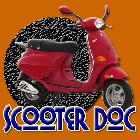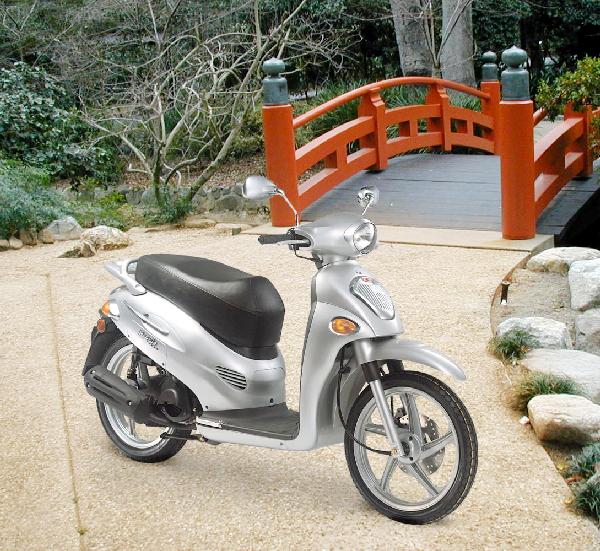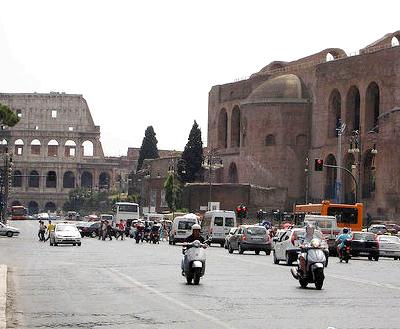Motor Scooters
History
Site Map
What's New
Features
Scooters from Amazon.comYes Man, Scooters in Film
Larry Crowne and scootering
Helmet Free scootering
Scooters in a failing economy
Scooter Economy
Scooter ROI Analysis
Scooter pays for itself
Types of Motorscooters
Why ride a scooter?
Motorscooter FAQ
Buying Scooters Online
Join Our Mailing List
Recommend this site
Scooter Inspiration
Scooter EconomyMotorscooter Advantages
Motorscooter Disadvantages
Motorscooter Books
Motor Scooter Poetry
Business Scooter Travel
Motorscooter Posters
Motorscooters in California
Scooting in the UK
Green Scooting in China
Scooting in Italy
Motorscooters in Iraq
Motor Scooter History
The Ice-Cream Scooter
Pets and Motorscooters
RVs and Motorscooters
Gas vs. Electric Scooters?
Put-putting Pleasures
Recommended Scooters
Scooter Culture
Larry Crowne (film)
Dating and Scooter Culture
Motorscooter Freedom
Motor Scooter Image
Scooter Lib
Back to School on a scooter
Motor Scooter Music
Motorscooter Camping
Types of Motorscooters
Classic Motor ScootersItalian Motor Scooters
The Vespa Motorscooter
The Aprilia Motorscooter
Falcon Electric Scooters
50cc Motorscooters
Kymco Motorscooters
GT Chaunl Scooters
Chinese Motor Scooters
TANK Motorscooters
The RoadRunner Scooter
Roketa Motorscooters
The I-scooter
Moped Scooters
Mopeds
Scooter Choices
Best Scooter DealsThe Performance Scooter
The Luxury Scooter
The Minimalist Scooter
The Classic Scooter
The Basic Scooter
The I-scooter
The Electric Scooter
Stand-up Scooters
The Mobility Scooter
Used Motorscooters
California Legal Scooters
Toy Scooters
Practical matters
Trouble starting a scooterScooters and the Environment
Scooter Return On Investment Analysis
Motor Scooter Repair
The Scooter Commute
Scooter Repair Shops
Scooter Replacement Parts
Vespa Repair
Scheduled Maintenance
Fuel Efficient Driving
Essential Scooterist Kit
Passengers on a Scooter
Motor Scooter parking
Using the Kick Starter
Motor Scooter Batteries
Motor Scooter Stands
Rotating a Scooter
Cargo Storage Issues
Chinese Scooter Alarms
Scooter Roadside Assistance
Affordable Insurance
Scootering in groups
Motorscooter safety
Motorscooter SafetyDriving a Motorscooter
MSF Manual: Your Scooter
Scooters and Potholes
Important, before you drive
Motorscooter Helmets
All-weather Scootering
The Oily Path of Safety
Motorscooter Journal
Motorscooter JournalOff-highway scooter routes
The Scooterdoc
Scooter Choice Ethics
India Shuns Scooters
Left-handed Motorscooters
Other Types of Scooters
Mobility ScootersScooter-inspired Vehicles
Electric Motorscooters
The Three-wheel Scooter

Vespa Service In
Southern California
The Beginning
The history of motor scooters begins in the 1800s with the first well-documented successful example being the Hildebrand & Wolfmueller, which was patented in Munich, Bavaria in 1894. Characterized by the typical scooter step-through frame, and using a twin cylinder water-cooled engine, the Hildebrand & Wolfmueller, though not a significant commercial success, nevertheless led the way in shifting from pedal to power driven transportation. It was not until after WWII, however, that further progress was made.
The Vespa
Following the second world war when technology and development were at a very low ebb in Italy, subsidies were granted by the Italian government to companies engaged in producing vehicles. Ferdinado Innocenti of the Lambratte region of Milan conceived the modern scooter. In collaboration with designer Corradino D'ascanio, Piaggio's ingenious aeronautical engineer who designed, constructed and flew the first modern helicopter, and based on earlier military motorcycles, the first designs were produced of a motor scooter resembling those we know today.
D'Ascanio, who could not stand motorcycles, set out to design a simple, sturdy, and economical vehicle that was also comfortable and elegant. First produced in 1946, the first Vespa had a 98cc engine and a top speed of 47mph. In 1948, the first 125cc Vespa was produced. He imagined a vehicle built on a unibody steel chassis with a front fork which, like a plane's landing gear, allowed for easy wheel changing.
Upon seeing the vehicle, Enrico Piaggio remarked "Sembra una Vespa!" ("It looks like a wasp!"). It did not at all resemble an uncomfortable and noisy motorcycle. The steel frame's shape protected the rider from road dirt and debris and the shape emanated sophistication and elegance at first glance. By 1949, 35,000 units had been produced and a million by 1960, by which time they were also manufactured in Germany, Great Britain, France, Belgium, Spain and, of course, Italy.
Vespa has had many images. It was first the two-wheeler of the post war economic boom, then, during the anti-Vietnam war years, a symbol for revolutionary ideas and social alienation.
a feature story from an early 1990's episode of Discovery channel's show, "Invention". (on You Tube)
The story continues today with the new generation of Vespa models, which range from the vintage-lovers' PX with manual transmission, to the Granturismo and Granturismo Sport (GTS), the largest and most powerful Vespas, and the LX, the latest restyling of the classic Vespa design. Vespa has fascinated millions of seved as an icon of Italian style and elegance as well as a means of personal transport that has become synonymous with freedom. See our Vespa Page.
The Lambretta
Back to early scooter beginnings, Innocenti, in collaboration with Pierluigi Torre, went on to produce the Lambretta (named after the river valley where the factory stood), which made its debut at the 1947 Paris Motor Show. When gasoline was strictly rationed, the new Lambretta was highly economical getting better than 160 mpg. With a 123cc engine and achieving a maximum speed of 45 mph, the new scooter was highly successful.

The Taiwanese scooter to rival the best scooters in the world
See Kymco Motorscooters
Scooters in Asia
In Japan, Taiwan, Tailand, and much of the Orient, motorscooters dominate the roads. In Taiwan, with a population of 23 million, there are 11 million registered motorscooters, and the Kymco Motorscooter has gained a reputation as one of the best in the world.
Scooters in America
Following Cushman in the 1950s, many manufacturers all over the world have come out with fascinating designs for the American market. The Italian scooters Vespa, Lambretta, Benelli, Piaggio, Gilera, and Malaguti followed a grand tradition but were later joined by China, Taiwan, Japan, Korea, Spain, England, and Germany who produced such scooters as Honda, Yamaha, Suzuki, Kymco, Phantom, Aprilia, Roketa, Peugeot, Tank, Bandit, and many more.
What to Buy Now
The current battle rages between the revival of classic motorscooters; the somewhat cheaper established brands of Japan and Taiwan: Honda, Suzuki, Yamaha, Kymco, with their dealers and worldwide support; and several inexpensive lines of Korean and Chinese scooters. As support is irregular and sometimes non-existant, it is advisable to do business with a reputable dealer who will handle registration and other details that could be very problematic with certain brands. The Chinese models, Roadrunner, Tank, Phantom, Roketa, Rascal range in price from 1/3 to 1/2 those of equivalent Japanese models but are a mixed bag. Roadrunner, Tank, Roketa, Chaunl, and Phantom come from reputable companies.
The Tank (a peculiar name for a diminutive scooter, and they also make bicycles) is inexpensive and has a reputation for reliability.
Many new scooter brands are becoming available all the time and are hard to keep up with. The Roadrunner I-scooter which came out in December of 2006 seems to have established itself well. TANK has been around for several years and is fairly well respected. The Chaunl scooters handled by Global Trailer have been sold since 2002 and seem also to be a solid choice. If you can't manage a Vespa, Honda (Find a local Honda Dealer), or Kymco, these are all viable options. If the fit is right, an electric motorscooter can also be the right choice.
For more reading on the history and magic of Scooters, try:
Scooters
 by Michael Dregni, Robert H. Ammon
by Michael Dregni, Robert H. Ammon
Bookmark this page to:


